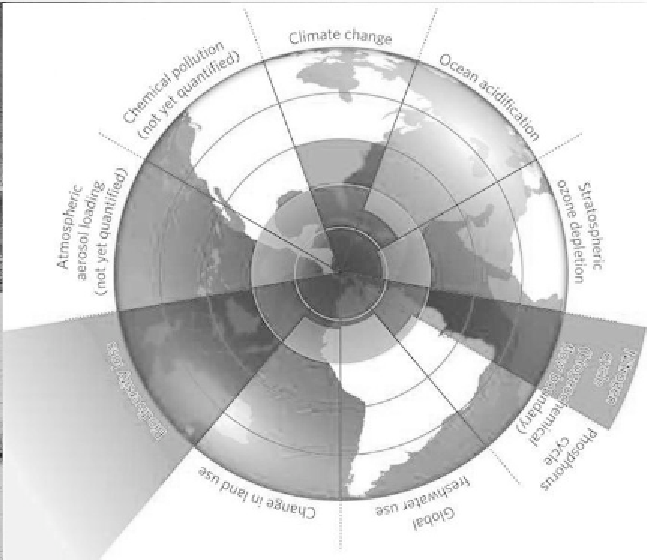Environmental Engineering Reference
In-Depth Information
Figure 7.2
The boundaries of our planet. The two innermost circles show the safe
levels. The further out from the centre, the worse the problems (climate
change, disturbed nitrogen cycle, for example). Once outside the circle,
the tipping point is exceeded, causing irreversible consequences. Climate
change is on the third circle already, but we can still bring it under control.
Source: Azote
Images/Stockholm Resilience Centre
securing better access to environmental decision-making and to appealing against
environmentally unfavourable decisions). Increasingly, new and innovative
methods of regulation and control for the protection of the environment are
being sought. Instead of observing international environmental law as part of
international law, scholars are increasingly considering it as part of a global
environmental administration in which environmental regulation is observed
as a multi-layer phenomenon.
This topic has considered the extent to which international environmental
law has been able to separate itself from classical international law. This seems
to be inevitable, as the international political community gradually established
by the Peace of Westphalia (1648) - and maintained by classical international
law - is unable to meet the challenges of international environmental law,
which requires the following:

Search WWH ::

Custom Search